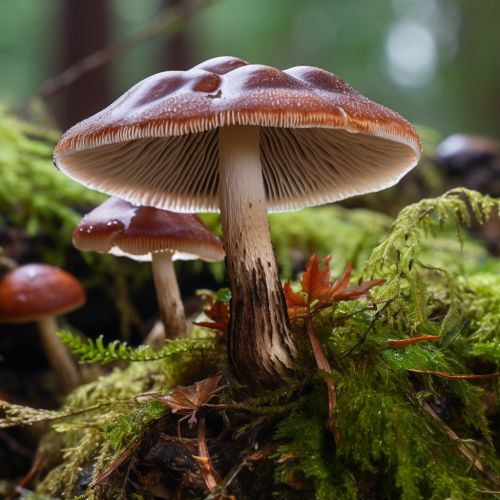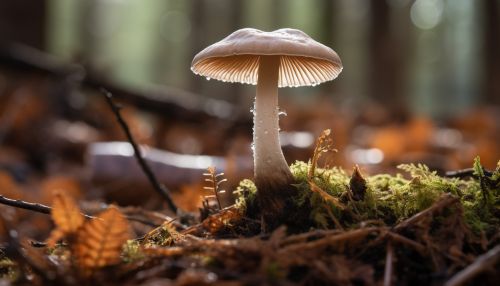Fungus
Introduction
Fungi are a group of eukaryotic organisms that includes microorganisms such as yeasts and molds, as well as the more familiar mushrooms. These organisms are classified as a kingdom, separate from plants, animals, protists, and bacteria. One major difference is that fungal cells have cell walls that contain chitin, unlike the cell walls of plants and some protists, which contain cellulose, and unlike the cell walls of bacteria.


Characteristics
Fungi have a wide range of morphologies, but their structural and functional features distinguish them from other organisms. These features include a cell wall, growth by apical extension, and the absence of photosynthesis.
Cell Wall
The fungal cell wall is a complex, dynamic structure that protects the cell from changes in environmental conditions. It is primarily composed of chitin, a long-chain polymer of N-acetylglucosamine, which provides rigidity and strength.
Growth
Fungi grow by apical extension. This means that growth occurs at the tip of the cell or hypha (a filamentous structure in fungi), and is driven by the assembly and disassembly of the cytoskeleton.
Absence of Photosynthesis
Unlike plants, fungi do not photosynthesize. They are heterotrophic organisms, obtaining nutrients by absorption. Some fungi are saprophytes, obtaining nutrients from dead organic matter, while others are parasites, obtaining nutrients from living organisms.
Classification
Fungi are classified based on their sexual reproductive structures. The four major groups of fungi are Ascomycota, Basidiomycota, Zygomycota, and Chytridiomycota.
Ascomycota
Ascomycota, or sac fungi, is the largest phylum of fungi, with over 64,000 species. The defining feature of this group is the "ascus" (plural "asci"), a microscopic sexual structure in which non-motile spores, called ascospores, are formed.
Basidiomycota
Basidiomycota, or club fungi, is a phylum that includes forms such as mushrooms, puffballs, stinkhorns, bracket fungi, other polypores, and rusts and smuts. The name comes from the club-like shape of the basidium.
Zygomycota
Zygomycota, or conjugated fungi, are a diverse fungal class that can be found worldwide. There are approximately 1050 species. They are mostly terrestrial in habitat, living in soil or on decaying plant or animal material.
Chytridiomycota
Chytridiomycota, or chytrids, are among the most primitive Eumycota, or true fungi. The name of the phylum is derived from the Greek chytridion, meaning "little pot", after the structure in which the spores were originally observed to be contained.
Ecology
Fungi play a crucial role in the balance of ecosystems. They are the principal decomposers in ecological systems, breaking down organic material to inorganic forms that can be absorbed by plants.
Decomposition
Fungi are the primary decomposers in many environments, including forests, grasslands, and deserts. They are efficient decomposers of organic material including cellulose and lignin, which are resistant to breakdown by many other organisms.
Mutualistic Relationships
Fungi often form mutualistic relationships with plants, animals, and other fungi. For example, mycorrhizal fungi form mutualistic relationships with plant roots, in which the fungi provide the plant with nutrients and in return receive sugars.
Human Uses
Fungi have many uses in human society, including in food production, in medicine, and as biological pesticides.
Food Production
Fungi are used in the production of many foods and beverages. For example, Saccharomyces cerevisiae, a species of yeast, is used in bread baking and beer brewing. Penicillium roqueforti is used in the production of blue cheese.
Medicine
Fungi have been the source of important pharmaceuticals. The most famous of these is penicillin, a group of antibiotics derived from Penicillium fungi. Other medicinal fungi include those that produce statins, used to lower cholesterol levels.
Biological Pesticides
Fungi can be used as biological pesticides to control weeds, plant diseases, and insect pests. Many of these fungi are specific to the pests they control, reducing the impact on non-target organisms and the environment.
See Also
- Mycology - the study of fungi
- Mushroom hunting - the activity of gathering mushrooms in the wild
- Mycorrhiza - a symbiotic association between a fungus and a plant
